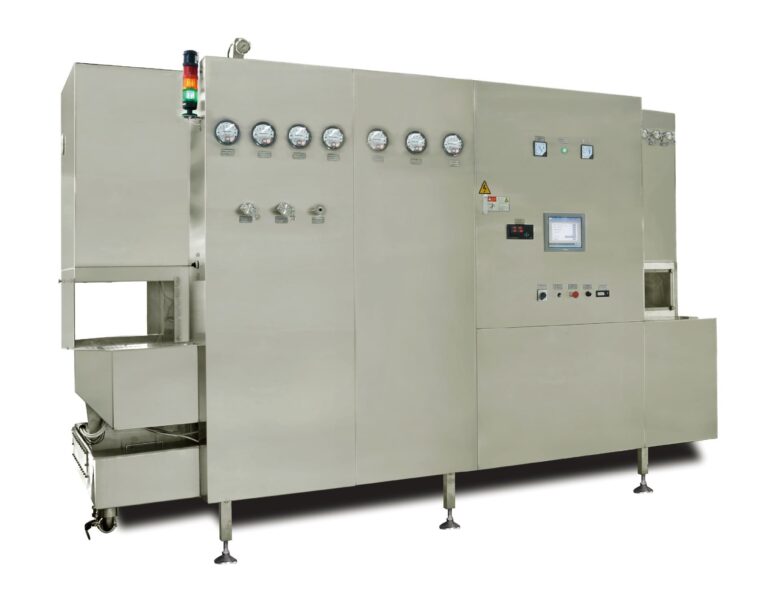Sterilizing and Depyrogenation Tunnel
The process of hot air sterilization and depyrogenation tunnels involves the removal of pyrogens from solutions or surfaces by means of controlled exposure of glass containers to high temperatures. Our tunnels are equipped with convection heat transfer and provide high production output with evenly and precise distribution of heat over glass vials, cartridges, syringes, and infusion containers.
Our depyrogenation tunnels are specially designed to be installed between a washing and a filling or packaging system (dependent on end user requirements). These high output tunnels count on precise temperature control and heat distribution to ensure full sterilization of glass containers before they are aseptically filled.


The tunnels are composed of three main chambers: inlet chamber, hot chamber, and cooling chamber, with the possibility to add a fourth chamber for further cooling.
The perfect balance flow of airflow conditions ensures the stability and uniform distribution of temperature offering safe and reproducible operations, with continuous in-process control and validation of the system.
All our equipment is fully compliant with strict pharmaceutical standards including cGMP and ISO.

Salient Features
- Possibility of using air for the Inlet Chamber from either the room or from an external environment via a duct
- Heating Chamber composed of two insulated stainless steel shells
- A maximum hot air temperature of 350°C for energy-saving and glass overheating prevention
- Ability to process each container type with suitable time and temperature to ensure correct depyrogenation cycle
- An additional dedicated fan provides the pressure control for the airflow balance in the Cooling Chamber
- Inline connection to upstream and downstream equipment
- Additional cooling chamber
- Sterilization cooling section
- Particle measuring inside the chamber
- A continuous airglow measuring system
- An automatic air pressure balance inside the tunnel for consistent positive pressure to avoid backflow
- Air speed monitoring and automatic adjustment by means of anemometric systems in all chambers
- Automatic vial discharge at batch end
- Remote assistance
- Printer and SCADA interface for production data recording and management
- Document packages for complete system validation



